
漢德百科全書 | 汉德百科全书
 Slovenia
Slovenia
 *Mediterranean Sea
*Mediterranean Sea
 Albania
Albania

 Eat and Drink
Eat and Drink
 Greek cuisine
Greek cuisine

 Eat and Drink
Eat and Drink
 Portuguese cuisine
Portuguese cuisine

 Eat and Drink
Eat and Drink
 Spanish Kitchen
Spanish Kitchen

 Eat and Drink
Eat and Drink
 Turkish cuisine
Turkish cuisine
 Greece
Greece
 Israel
Israel
 Italy
Italy
 Croatia
Croatia
 Libanon
Libanon
 Malta
Malta
 Morocco
Morocco
 Portugal
Portugal
 Slovenia
Slovenia
 Spain
Spain
 Turkey
Turkey
 Cyprus
Cyprus

 Als Grundelemente der Landesküchen der Mittelmeerregion gelten: Olivenöl und Oliven frisches Gemüse wie Tomaten, Auberginen, Paprika, Zucchini Knoblauch, Lauch und Zwiebel Fisch und Meeresfrüchte Kräuter und Gewürze wie Thymian, Rosmarin, Koriander, Salbei, Fenchel, Kümmel, Anis, Oregano und Basilikum helles Brot, Nudeln und Reis in einigen Ländern regelmäßiger Rotweingenuss zum Essen.
Als Grundelemente der Landesküchen der Mittelmeerregion gelten: Olivenöl und Oliven frisches Gemüse wie Tomaten, Auberginen, Paprika, Zucchini Knoblauch, Lauch und Zwiebel Fisch und Meeresfrüchte Kräuter und Gewürze wie Thymian, Rosmarin, Koriander, Salbei, Fenchel, Kümmel, Anis, Oregano und Basilikum helles Brot, Nudeln und Reis in einigen Ländern regelmäßiger Rotweingenuss zum Essen.
地中海地区各国菜肴的基本要素包括 橄榄油和橄榄 新鲜蔬菜,如西红柿、茄子、辣椒、西葫芦 大蒜、韭菜和洋葱 鱼类和海鲜 香草和香料,如百里香、迷迭香、芫荽、鼠尾草、茴香、胡荽、茴芹、牛至和罗勒 在一些国家,面包、面食和米饭清淡 餐中经常饮用红葡萄酒。
 *Mediterranean Sea
*Mediterranean Sea
 Egypt
Egypt
 Albania
Albania
 Algeria
Algeria
 Amber Road
Amber Road
 Bosnia Herzegovina
Bosnia Herzegovina
 France
France
 Gibraltar
Gibraltar
 Greece
Greece
 Israel
Israel
 Italy
Italy
 Croatia
Croatia
 Libanon
Libanon
 Libya
Libya
 Malta
Malta
 Malta
Malta
 Monaco
Monaco
 Montenegro
Montenegro
 Palestine
Palestine
 Slovenia
Slovenia
 Spain
Spain
 Syria
Syria
 Tunisia
Tunisia
 Turkey
Turkey
 Cyprus
Cyprus

 Belgium
Belgium
 Amber Road
Amber Road
 Denmark
Denmark
 Germany
Germany
 Estonia
Estonia
 France
France
 Greece
Greece
 Italy
Italy
 Latvia
Latvia
 Lithuania
Lithuania
 Netherlands
Netherlands
 Austria
Austria
 Poland
Poland
 Russia
Russia
 Switzerland
Switzerland
 Slovakia
Slovakia
 Slovenia
Slovenia
 Spain
Spain
 Czech Republic
Czech Republic
 Hungary
Hungary

琥珀之路(英语:Amber Road)是一条古代运输琥珀的贸易道路,这条水路和陆路结合而成的通商道路,从欧洲北部的北海和波罗的海通往欧洲南部的地中海,连结了欧洲的多个重要城市,维持了多个世纪。
在公元前后的很长一段时间,琥珀作为装饰品中的重要组成部分,被从北海和波罗的海海岸的产地,经由维斯瓦河和第聂伯河运输到意大利、希腊、黑海和埃及。琥珀之路连结了琥珀的产地和在欧洲、中东地区和远东地区的消费地,并经由另一条通商道路丝绸之路继续通往亚洲。
Als Bernsteinstraße werden verschiedene Handelswege des Altertums (Altstraßen) bezeichnet, auf denen (unter anderem) Bernstein von der Nord- und Ostsee nach Süden in den Mittelmeerraum gelangte. Genau genommen handelt es sich nicht um eine Straße, sondern um unabhängige Handelswege, die für verschiedene Handelsgüter genutzt wurden. Die Bezeichnung „Bernsteinstraße“ tritt etwa ab dem Ende des 18. Jahrhunderts auf und hat in antiken Quellen keine Entsprechung.
 Australia
Australia
 Belgium
Belgium
 Chile
Chile
 Denmark
Denmark
 Germany
Germany
 Estonia
Estonia
 Finland
Finland
 France
France
 Greece
Greece
 Ireland
Ireland
 Iceland
Iceland
 Israel
Israel
 Italy
Italy
 Japan
Japan
 Canada
Canada
 Luxembourg
Luxembourg
 Mexico
Mexico
 New Zealand
New Zealand
 Netherlands
Netherlands
 Norwegen
Norwegen
 OECD
OECD
 Emiel van Lennep
Emiel van Lennep
 OECD
OECD
 Don Johnston
Don Johnston
 OECD
OECD
 Jean-Claude Paye
Jean-Claude Paye
 OECD
OECD
 José Ángel Gurría
José Ángel Gurría
 OECD
OECD
 Staffan Sohlman
Staffan Sohlman
 OECD
OECD
 Thorkil Kristensen
Thorkil Kristensen
 Austria
Austria
 Poland
Poland
 Portugal
Portugal
 Republic of Korea
Republic of Korea
 Sweden
Sweden
 Switzerland
Switzerland
 Slovakia
Slovakia
 Slovenia
Slovenia
 Spain
Spain
 Czech Republic
Czech Republic
 Turkey
Turkey
 Hungary
Hungary
 United States
United States
 United Kingdom
United Kingdom

 Important International Organizations
Important International Organizations
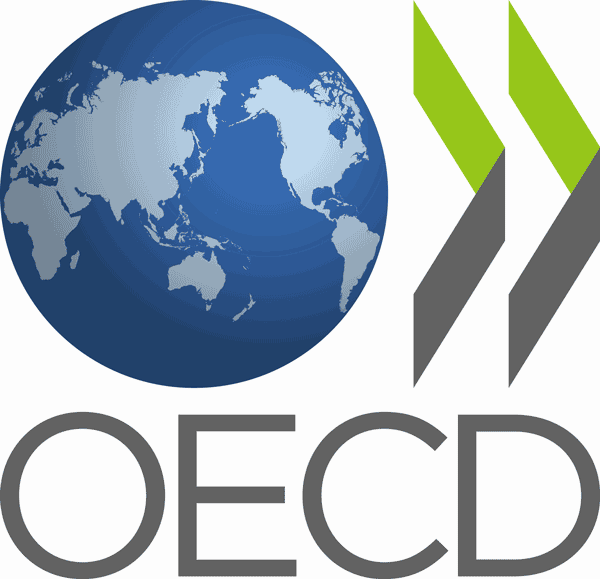
経済協力開発機構(けいざいきょうりょくかいはつきこう)は、国際経済全般について協議することを目的とした国際機関。公用語の正式名称は、英語では"Organisation[1] for Economic Co-operation and Development"(イギリス英語表記)、フランス語では"Organisation de Coopération et de Développement Economiques"。略称は英語ではOECD、フランス語ではOCDE。
本部事務局はパリ16区の旧ラ・ミュエット宮殿に置かれている。事務総長はアンヘル・グリア。
The Organisation for Economic Co-operation and Development (OECD; French: Organisation de Coopération et de Développement Économiques, OCDE) is an intergovernmental economic organisation with 37 member countries,[1] founded in 1961 to stimulate economic progress and world trade. It is a forum of countries describing themselves as committed to democracy and the market economy, providing a platform to compare policy experiences, seek answers to common problems, identify good practices and coordinate domestic and international policies of its members. Generally, OECD members are high-income economies with a very high Human Development Index (HDI) and are regarded as developed countries. As of 2017, the OECD member countries collectively comprised 62.2% of global nominal GDP (US$49.6 trillion)[3] and 42.8% of global GDP (Int$54.2 trillion) at purchasing power parity.[4] The OECD is an official United Nations observer.[5]
In 1948, the OECD originated as the Organisation for European Economic Co-operation (OEEC),[6] led by Robert Marjolin of France, to help administer the Marshall Plan (which was rejected by the Soviet Union and its satellite states).[7] This would be achieved by allocating United States financial aid and implementing economic programs for the reconstruction of Europe after World War II. (Similar reconstruction aid was sent to the war-torn Republic of China and post-war Korea, but not under the name "Marshall Plan".)[8]
In 1961, the OEEC was reformed into the Organisation for Economic Co-operation and Development by the Convention on the Organisation for Economic Co-operation and Development and membership was extended to non-European states.[9][10] The OECD's headquarters are at the Château de la Muette in Paris, France.[11] The OECD is funded by contributions from member countries at varying rates and had a total budget of €386 million in 2019.[2]
Although OECD does not have a power to enforce its decisions, which further require unanimous vote from its members, it is recognized as highly influential publisher of mostly economic data through publications as well as annual evaluations and rankings of members countries.[12]
L'Organisation de coopération et de développement économiques (OCDE) est une organisation internationale d'études économiques, dont les pays membres — des pays développés pour la plupart — ont en commun un système de gouvernement démocratique et une économie de marché. Elle joue essentiellement un rôle d'assemblée consultative1.
L'OCDE a succédé à l'Organisation européenne de coopération économique (OECE) issue du plan Marshall et de la Conférence des Seize (Conférence de coopération économique européenne) qui a existé de 1948 à 1960. Son but était l'établissement d'une organisation permanente chargée en premier lieu d'assurer la mise en œuvre du programme de relèvement commun (le plan Marshall), et, en particulier, d'en superviser la répartition2.
En 2020, l'OCDE compte 37 pays membres et regroupe plusieurs centaines d'experts. Elle publie fréquemment des études économiques et sociales — analyses, prévisions et recommandations de politique économique — et des statistiques, principalement concernant ses pays membres.
Le siège de l'OCDE se situe à Paris (16e), au château de la Muette. L'organisation possède également des bureaux dans plusieurs autres métropoles, notamment à Berlin, Mexico, Tokyo et Washington.
L'Organizzazione per la cooperazione e lo sviluppo economico (OCSE) – in inglese Organization for Economic Co-operation and Development (OECD), e in francese Organisation de coopération et de développement économiques (OCDE) – è un'organizzazione internazionale di studi economici per i paesi membri, paesi sviluppati aventi in comune un'economia di mercato.
L'organizzazione svolge prevalentemente un ruolo di assemblea consultiva che consente un'occasione di confronto delle esperienze politiche, per la risoluzione dei problemi comuni, l'identificazione di pratiche commerciali e il coordinamento delle politiche locali e internazionali dei paesi membri[1]. Ha sede a Parigi nello Château de la Muette[2].
Gli ultimi paesi ad aver aderito all'OCSE sono la Colombia (28 aprile 2020),la Lettonia (1º luglio 2016) e la Lituania (5 luglio 2018), per un totale di 36 paesi membri.
La Organización para la Cooperación y el Desarrollo Económico1 (OCDE) es un organismo de cooperación internacional, compuesto por 37 estados,34 cuyo objetivo es coordinar sus políticas económicas y sociales. La OCDE fue fundada en 1961 y su sede central se encuentra en el Château de la Muette en París (Francia). Los idiomas oficiales de la entidad son el francés y el inglés.2
En la OCDE, los representantes de los países miembros se reúnen para intercambiar información y armonizar políticas con el objetivo de maximizar su crecimiento económico y colaborar a su desarrollo y al de los países no miembros.
Conocida como «club de los países ricos»,56 a partir de 2017, sus países miembros comprendieron colectivamente el 62,2 % del PIB nominal global (US$49,6 billones) y el 42,8 % del PIB global (Int US$54,2 billones).7
Организа́ция экономи́ческого сотру́дничества и разви́тия (сокр. ОЭСР, англ. Organisation for Economic Co-operation and Development, OECD) — международная экономическая организация развитых стран, признающих принципы представительной демократии и свободной рыночной экономики.
Создана в 1948 году под названием Организа́ция европе́йского экономи́ческого сотру́дничества (англ. Organisation for European Economic Co-operation, OEEC) для координации проектов экономической реконструкции Европы в рамках плана Маршалла.
Штаб-квартира организации располагается в Шато де ла Мюетт, в Париже. Генеральный секретарь (с 2006 года) — Хосе Анхель Гурриа Тревиньо (Мексика). Руководящим органом ОЭСР является совет представителей стран — членов организации. Все решения в нём принимаются на основе консенсуса.
По данным на 2011 год, в странах ОЭСР проживало 18 % населения мира[2].

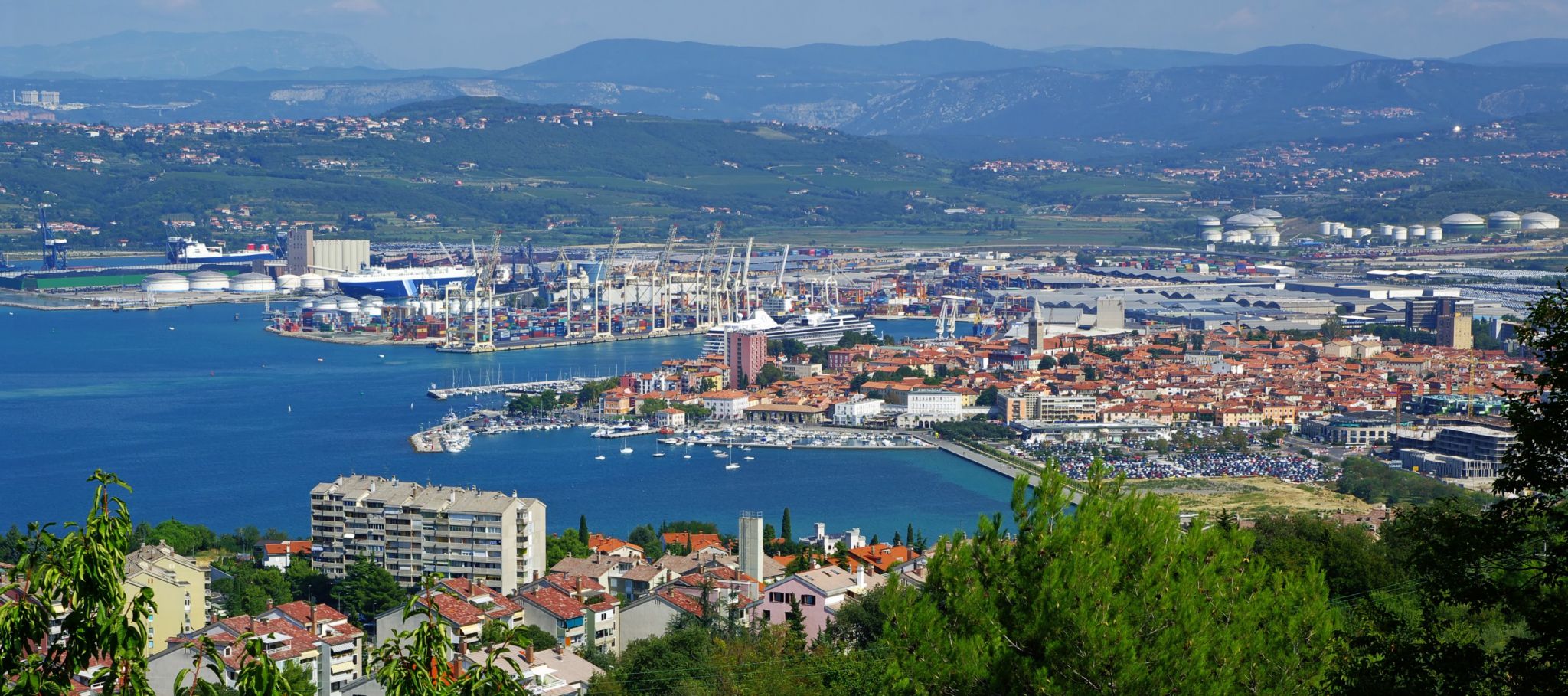




Ljubljana ( [li̯ubˈli̯aːna], umgangssprachlich/dialektal [luˈblaːna]; deutsch , v. a. in Österreich verwendet: Laibach; italienisch Lubiana) ist die Hauptstadt von Slowenien und mit 288.250 Einwohnern (2017)[1] zugleich seine größte Stadt.
Die Stadt ist das politische, wirtschaftliche und kulturelle Zentrum Sloweniens. Ljubljana ist Sitz des gleichnamigen römisch-katholischen Erzbistums und seit 1919 Universitätsstadt. 2016 wurde Ljubljana durch die Gemeinschaft Evangelischer Kirchen in Europa der Ehrentitel „Reformationsstadt Europas“ verliehen.[2]
卢布尔雅那(斯洛文尼亚语、匈牙利语:Ljubljana),近似汉音为“溜布俩那”,德语称莱巴赫(Laibach),意大利语称卢比亚纳(Lubiana),斯洛文尼亚的首都、该国最大城市和11个特别市之一。面积约170平方千米,人口27.86万(2007年统计)。
卢布尔雅那是斯洛文尼亚的政治、经济和文化中心。该市是斯洛文尼亚中央政府及其各部、国会和总统的驻地。由于交通联系、产业集中、科研机构和产业传统等方面的优势,该市在斯洛文尼亚得以拥有首席经济地位。
卢布尔雅那地处阿尔卑斯山山麓的河谷盆地,风景宜人。城市的建筑氛围明显受到了来自奥地利和意大利的强烈影响,位于河畔的市中心地带,遍布文艺复兴风格、巴洛克风格、新古典主义和新艺术运动风格的古老建筑与桥梁,高地上始建于中世纪的城堡则俯瞰整个古城。卢布尔雅那的另一个特别之处,是其著名的非主流文化中心Metelkova,在反传统的青年人中颇有影响。
リュブリャナ(スロベニア語: Ljubljana 言語発音: [ljuˈbljaːna] (![]() 音声ファイル)、ドイツ語: Laibach、イタリア語: Lubiana、ラテン語: Labacum, Aemona)[2]は、スロベニアの都市およびそれを中心とした基礎自治体でスロベニアの首都である。
音声ファイル)、ドイツ語: Laibach、イタリア語: Lubiana、ラテン語: Labacum, Aemona)[2]は、スロベニアの都市およびそれを中心とした基礎自治体でスロベニアの首都である。
Ljubljana (Slovene: [ljuˈbljàːna] (![]() listen),[5] locally also [luˈblàːna]; also known by other, historical names) is the capital and largest city of Slovenia.[6][7] It has been the cultural, educational, economic, political, and administrative center of independent Slovenia since 1991. Its central geographic location within Slovenia, transport connections, concentration of industry, scientific and research institutions, and cultural tradition are contributing factors to its leading position.
listen),[5] locally also [luˈblàːna]; also known by other, historical names) is the capital and largest city of Slovenia.[6][7] It has been the cultural, educational, economic, political, and administrative center of independent Slovenia since 1991. Its central geographic location within Slovenia, transport connections, concentration of industry, scientific and research institutions, and cultural tradition are contributing factors to its leading position.
During antiquity, a Roman city called Emona stood in the area.[8] Ljubljana itself was first mentioned in the first half of the 12th century. It was under Habsburg rule from the Middle Ages until the dissolution of the Austro-Hungarian Empire in 1918. Situated at the middle of a trade route between the northern Adriatic Sea and the Danube region, it was the historical capital of Carniola,[9] one of the Slovene-inhabited parts of the Habsburg Monarchy.[6]
Ljubljana ou plus rarement Lubiana[réf. nécessaire] (API /lju'bljana/, en allemand Laibach (/'lɑɪbaχ/), en italien Lubiana (/lu'bjaːna/), est la ville principale et la capitale de la Slovénie. Ville d'environ 280 000 habitants1, elle a été influencée tout au long de son histoire par différentes cultures du fait de sa position géographique charnière entre les cultures germanique, latine et slave. Depuis 1991, la ville est le centre économique et culturel principal de la Slovénie devenue indépendante de la Yougoslavie.
Lubiana (in sloveno , pronuncia ljuˈbljaːna[2]; in tedesco Laibach; in latino Labacum, anticamente Aemona) è la capitale e la più grande città della Slovenia.
Situata nel centro del paese, adagiata sul piccolo fiume Ljubljanica, la città possiede una popolazione di circa 287.218 abitanti[3] ed è divisa in 17 distretti e ha 37 frazioni. È considerata il cuore culturale, scientifico, economico, politico e amministrativo della Slovenia con la sede del governo centrale, del Parlamento, dell'Ufficio del Presidente, degli organi amministrativi e di tutti i ministeri della nazione.
Nel corso della sua storia è stata influenzata dalla sua posizione geografica, all'incrocio della cultura tedesca, slava e latina. La città pur essendo composta da architetture prevalentemente moderne conserva nel centro storico alcuni edifici che si rifanno allo stile barocco e all'art nouveau. Alcuni fattori che contribuiscono alla sua situazione economica sono la presenza di collegamenti viari, la concentrazione di industrie e istituti di ricerca scientifica.
Liubliana1 (en esloveno, Ljubljana, pronunciado ![]() /ljuˈbljàːna/ (?·i); en alemán, Laibach /'lɑɪbaχ/; en italiano, Lubiana /lub'jaːna/) es la capital y mayor ciudad de Eslovenia. En 2008 contaba con 270.828 habitantes,23 repartidos por una superficie de 275 km².
/ljuˈbljàːna/ (?·i); en alemán, Laibach /'lɑɪbaχ/; en italiano, Lubiana /lub'jaːna/) es la capital y mayor ciudad de Eslovenia. En 2008 contaba con 270.828 habitantes,23 repartidos por una superficie de 275 km².
Nacida como campamento militar romano de la Legio XV Apollinaris a mediados del siglo I a. C.,4 su carácter de ciudad se consolidó con la fundación de la Colonia Iulia Emona años más tarde.5 Tras sucesivas destrucciones, en el siglo VI se instalaron los antepasados de los eslovenos, y en el siglo XI cayeron bajo el dominio de los francos.6 Desde 1278, tras su conquista por parte de Rodolfo I de Habsburgo, la ciudad pasó a manos de los Habsburgo, situación que perduró hasta 1797.6
Durante el período napoleónico, Liubliana fue capital de las Provincias Ilirias y entre 1816 y 1849 lo fue del Reino de Iliria.7 En 1918, tras la Primera Guerra Mundial, se incorpora al Reino de los Serbios, Croatas y Eslovenos, y tras la Segunda Guerra Mundial se convirtió en la capital de la República Socialista de Eslovenia, formando parte de Yugoslavia.8 En 1991, y tras un conflicto bélico, Eslovenia se independizó de Yugoslavia, siendo desde entonces Liubliana la capital del país.
Su patrimonio histórico y monumental, así como diversas celebraciones culturales que tienen lugar a lo largo del año, entre las que destaca el Festival Internacional de Verano, la convierten en una ciudad receptora de turismo tanto nacional como internacional. Entre sus monumentos más representativos se encuentran la Catedral, el Castillo, la Iglesia Franciscana de la Anunciación y el Puente de los Dragones, así como el conjunto de edificios modernistas. El arquitecto Jože Plečnik firmó muchos de los más destacados edificios de la ciudad.
Liubliana dispone de una red desarrollada de carreteras y ferrocarril, además de contar con un aeropuerto con vuelos internacionales e inmerso en obras de ampliación destinadas a ampliar su capacidad operativa, actualmente desbordada.9
La Universidad de Liubliana, fundada en 1919, tiene su sede en la ciudad, y en el curso 2006-07 contaba con más de 63.000 alumnos.10 Su biblioteca sumaba en 2004 1.169.090 libros.2 Cuenta además con distintos institutos culturales internacionales, como el Instituto Cervantes (España), British Council (Reino Unido) o Instituto Goethe (Alemania).11
Como capital del Estado, Liubliana alberga las sedes del gobierno (Asamblea Nacional y Consejo Nacional), ministerios, instituciones y organismos asociados, así como de la residencia oficial del presidente de Eslovenia.12 La ciudad es miembro de UCLG, UCUE, Eurocities,13 URBACT, Civitas Forum,14 Les Rencontres, European Cities Marketing15 y Global Cities Dialogue.216 En el plano económico, la ciudad mantiene una destacada posición a nivel nacional, es sede del principal mercado de valores del país, del banco de Eslovenia y de numerosas empresas nacionales.
Liubliana ha sido premiada con el título Capital Verde Europea 2016.
Лю́бляна[1] (словен. Ljubljana, до 1918 — Лайбах, нем. Laibach) — город, столица Словении. Образует городскую общину Любляна, разделённую на семнадцать районов.
Население — 258,9 тыс. человек (2014 год), или 13 % населения страны. В пределах агломерации проживает свыше 500 тысяч человек. Расположена в межгорной Люблянской котловине на берегах реки Любляницы.
Главный политический, экономический и культурный центр Словении. Концентрирует свыше 40 % ВВП страны и треть штаб-квартир крупнейших компаний Словении. Здесь находится Люблянский университет, в котором обучается свыше пятидесяти тысяч студентов. Общественный транспорт состоит из автобусов.
Историческое ядро образует крепость Град, под ним — Старый город. Остатки античных и средневековых построек; ансамбли в стилях барокко XVI—XVIII веков, модерна после землетрясения 1895 года, постройки архитектора Йоже Плечника в первой половине XX века.
С I века — римский город Эмона, обезлюдевший в V веке; как средневековое поселение известно с XII века. С 1335 по 1918 годы под немецким названием Лайбах в составе государства Габсбургов, с XIV века — административный центр Крайны. С 1918 года под словенским названием Лю́бляна — столица Словении.
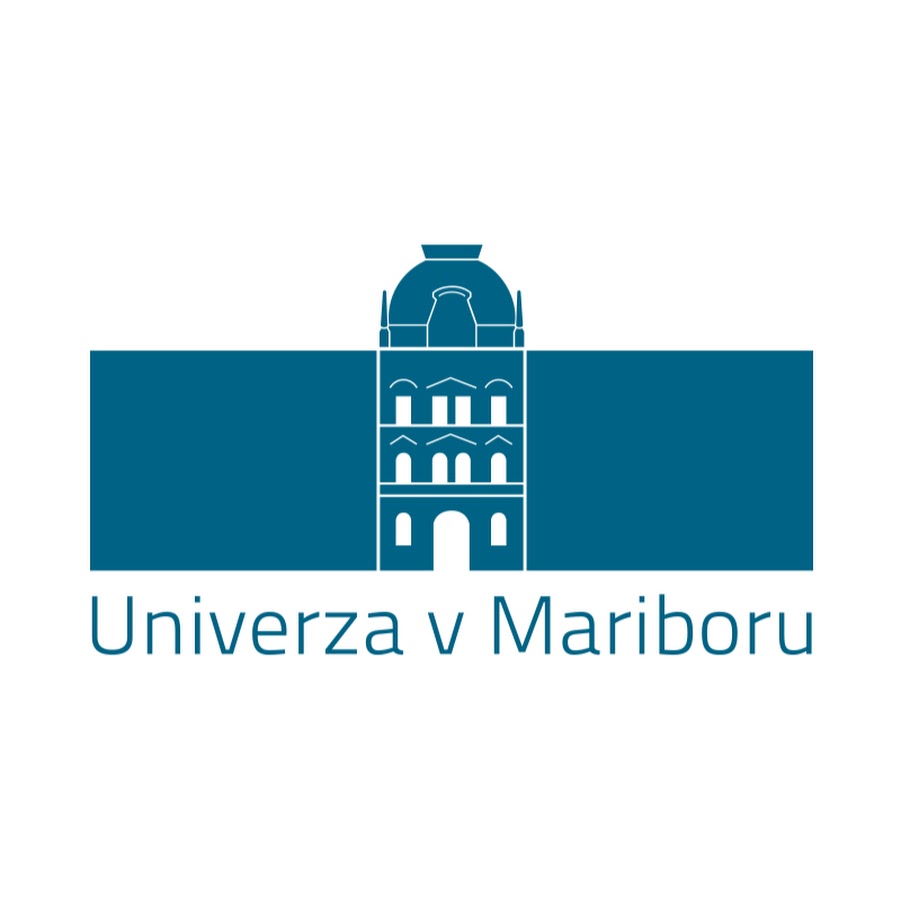

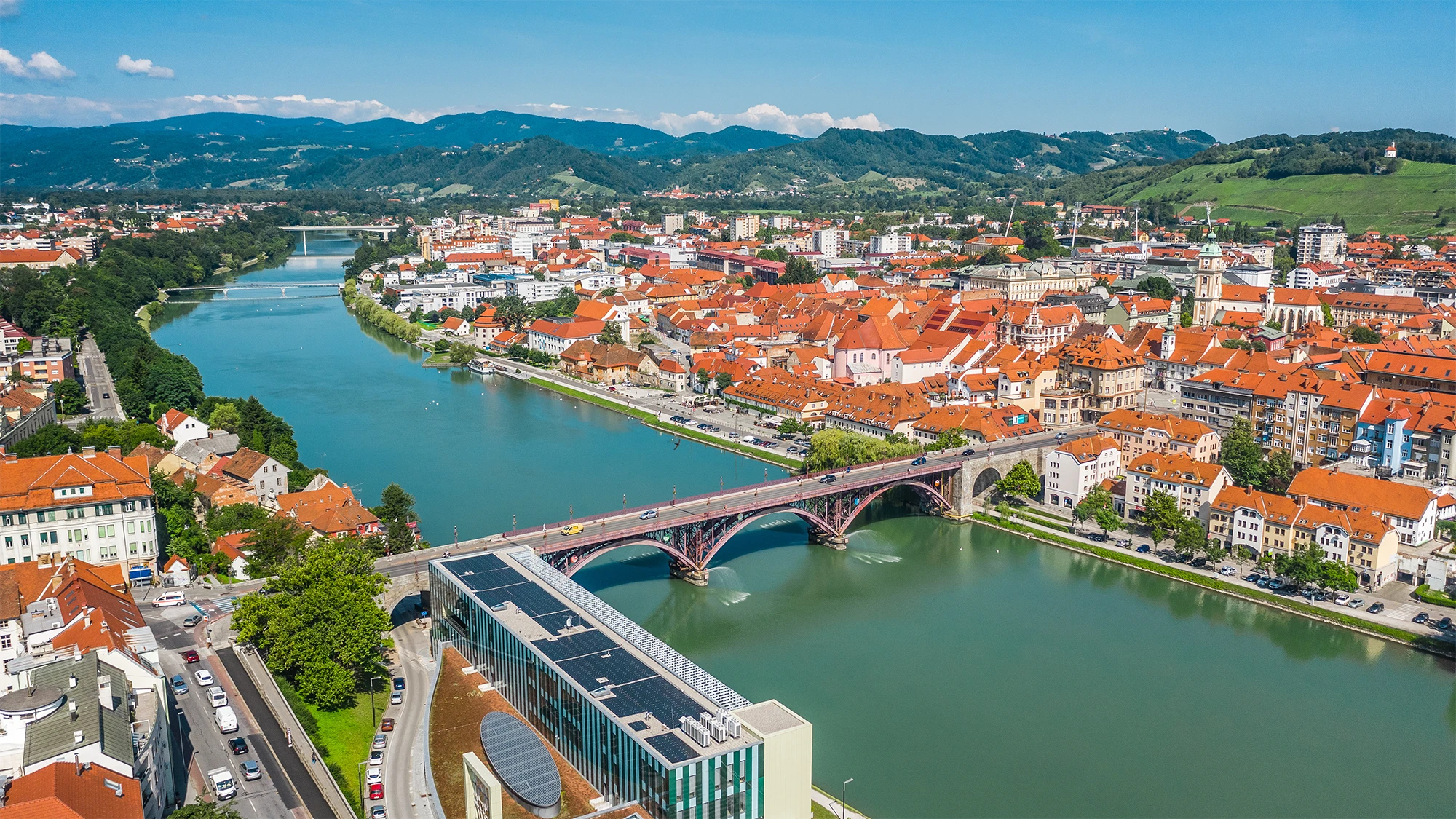
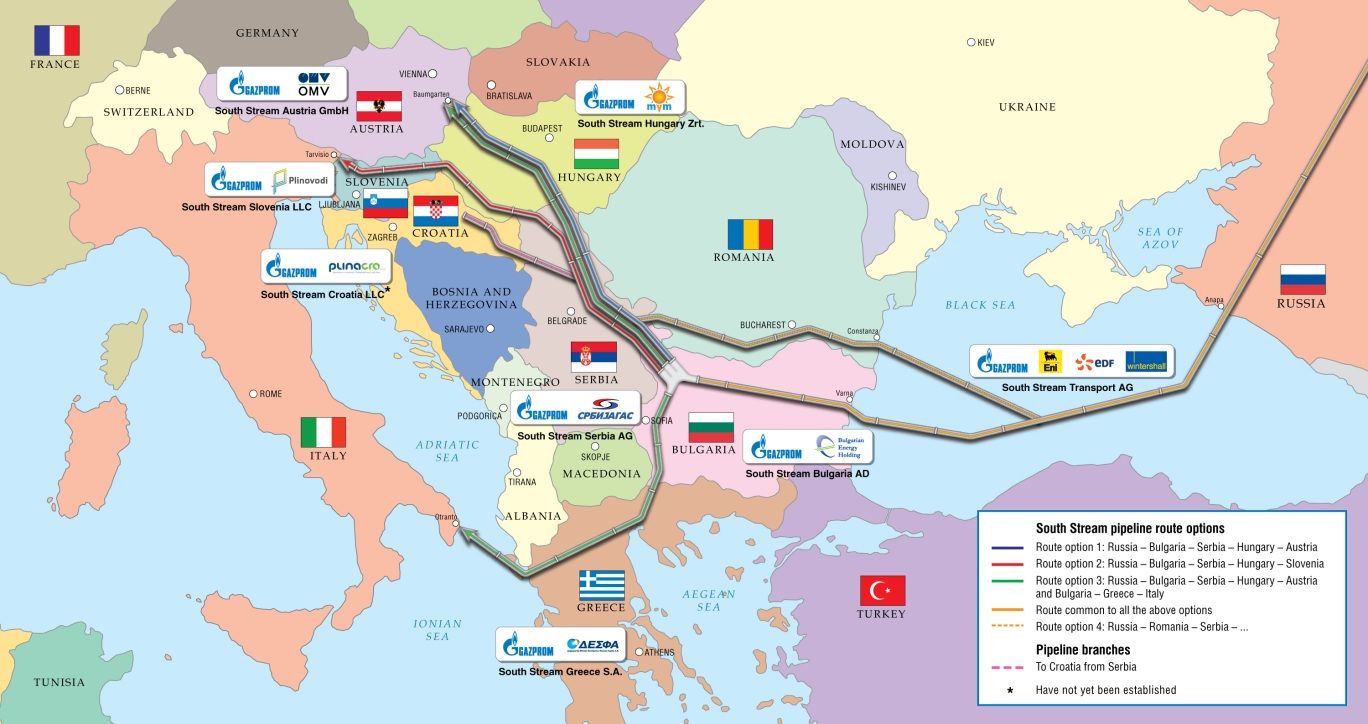
 Architecture
Architecture
 History
History
 Economy and trade
Economy and trade
 Dances
Dances
 International cities
International cities
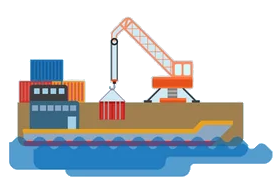 Important port
Important port
 Colleges and Universities in Europe
Colleges and Universities in Europe
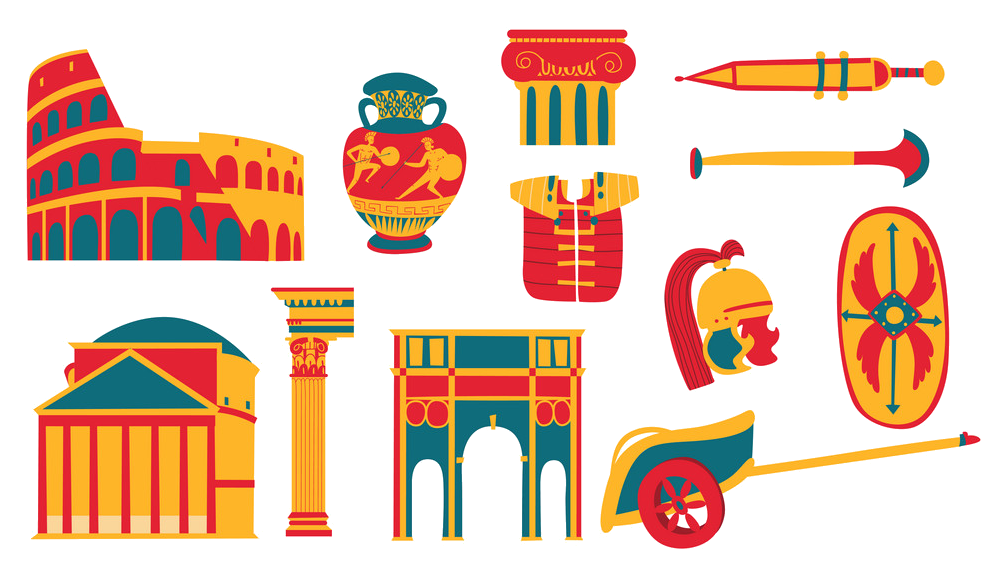 Cities founded by the Romans
Cities founded by the Romans
 Sport
Sport
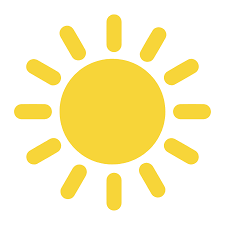 Energy resource
Energy resource